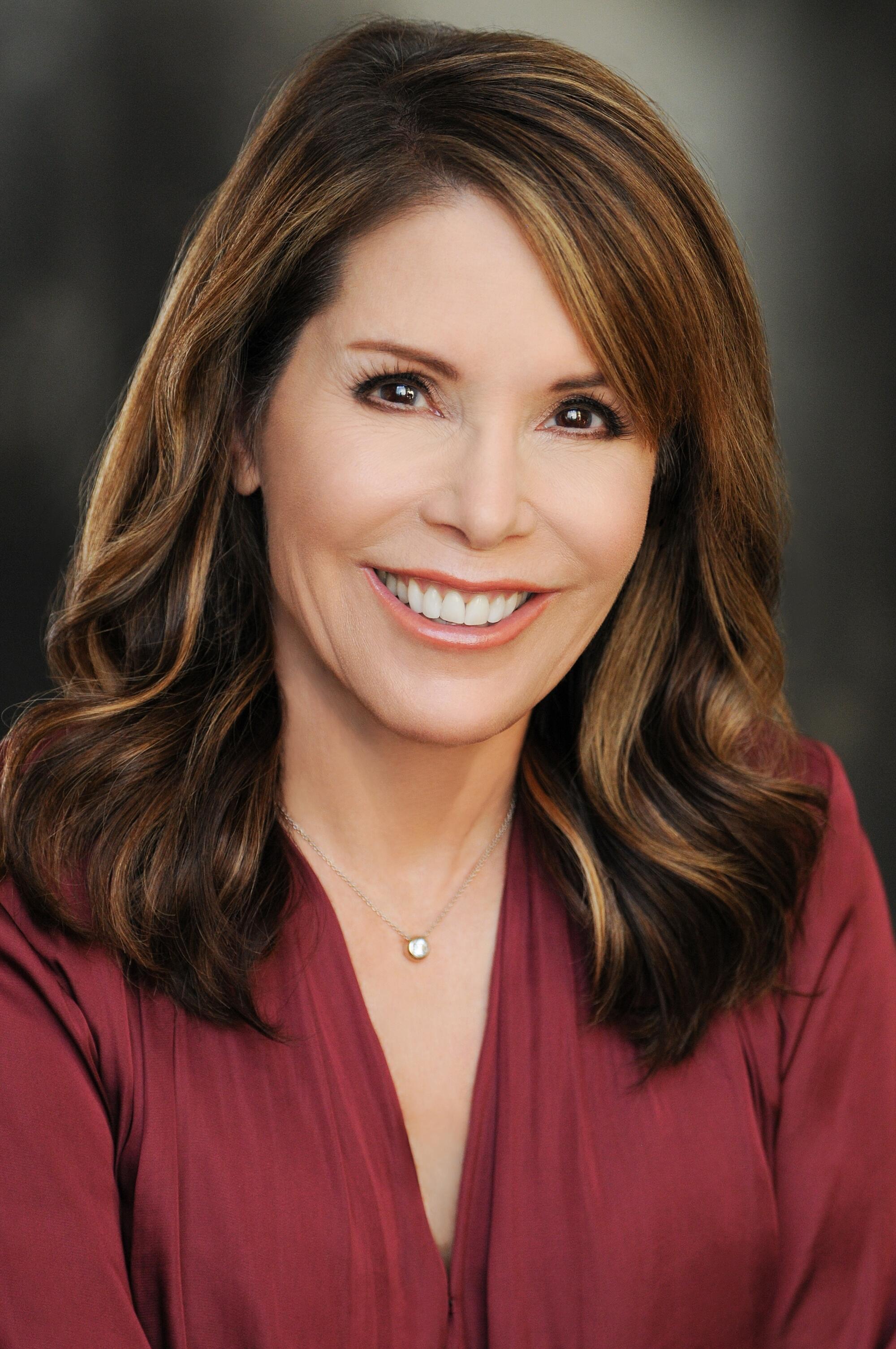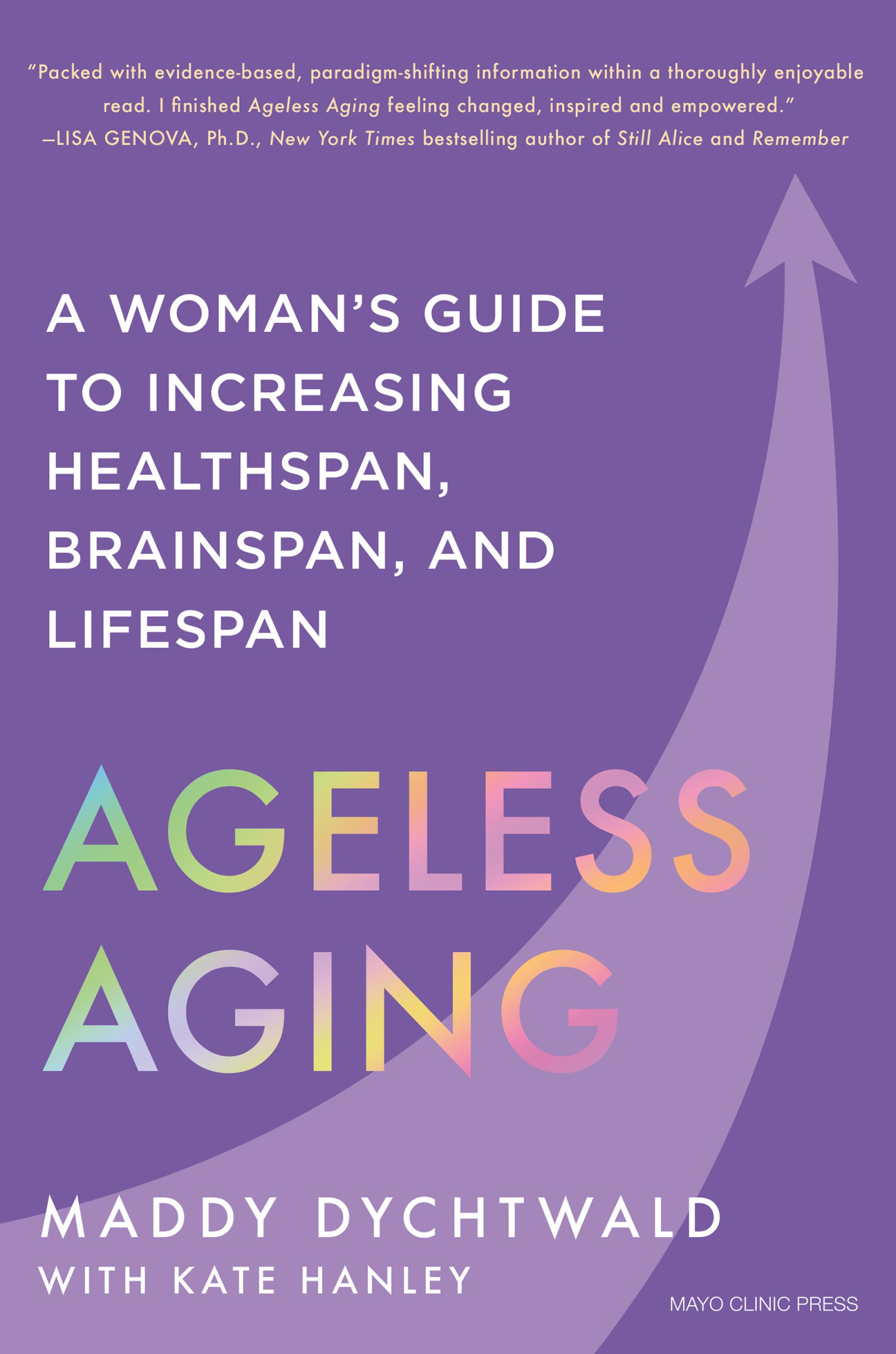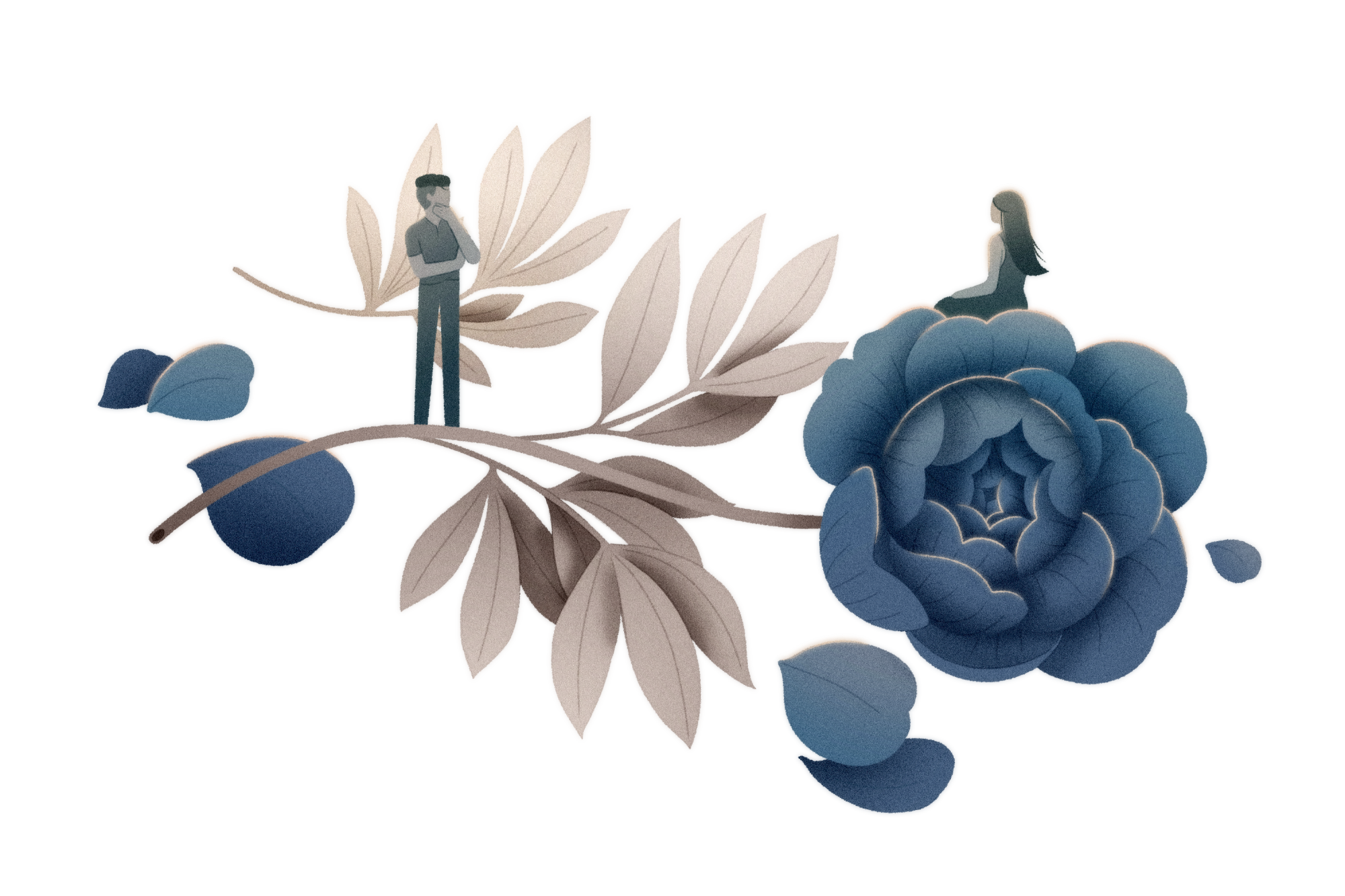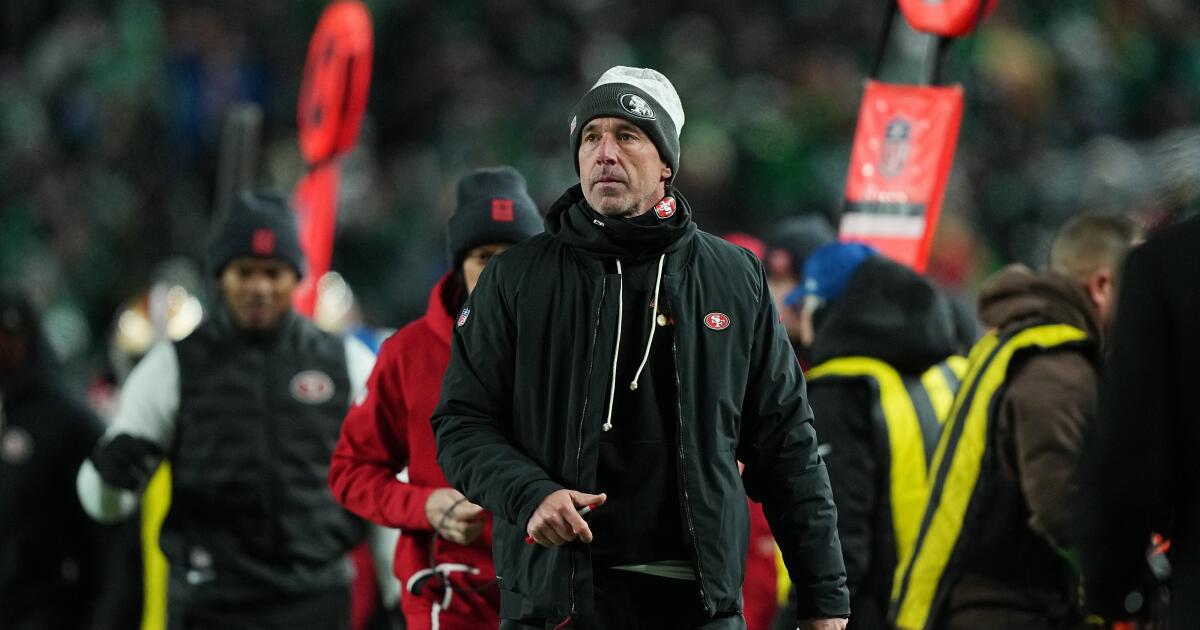Science
Want to live to 100? That may depend on your sex

Do you want to live to 100? The path to becoming a healthy centenarian — as opposed to just a centenarian — is surprisingly different for those born as women and men, says social researcher and author Maddy Dychtwald. And it’s never too early to start on the journey, even when you’re young and spry. (We’re talking to you, zoomers.)
As co-founder of Age Wave, a nonprofit think tank focusing on longevity and aging, Dychtwald has been researching these topics for nearly 40 years. In her new book, “Ageless Aging: A Woman’s Guide to Increasing Healthspan, Brainspan, and Lifespan,” Dychtwald addresses the most recent aging picture for women and identifies a holistic plan for longevity. It weaves together science and medicine, psychology and spirituality, as well as financial advice in a research-based guidebook that’s brimming with actionable steps.
“There’s this ripple effect,” Dychtwald says of the lifestyle she recommends for maximizing healthspan — meaning how long you are living in good health, versus how long you are just living. “If you can impact one piece — sleep, nutrition, fitness, having a sense of purpose and connection — it begins to affect the others.” This interview has been edited for length and clarity.

Shelf Help is a new wellness column where we interview researchers, thinkers and writers about their latest books — all with the aim of learning how to live a more complete life.
How is longevity different for women than men?
Woman have actually won the longevity lottery. We live, on average in the United States, six years longer than men. So that’s incredibly positive. But there is a dark side to this. And that is: We women, on average, spend the last 12 to 14 years in declining health. So we are not doing a great job of matching our healthspan to our lifespan. There’s a gendered gap when it comes to healthspan. Why? I don’t know that the answer is clear, even in the minds of scientists. What we do know is that estrogen has protective properties for women. But once their estrogen levels decline, they have more health challenges than men do, as they get older. But it’s something scientists don’t fully understand yet.
If women are 51% of the population, doesn’t it stand to reason that scientists would better understand this by now?
You would think! I think the healthcare system, overall, is well-meaning. But it’s been created by men and as a result, the focus has really been more on men than women. One great example of how women can, as a community, really motivate physicians and researchers and scientists to change is the whole breast cancer issue. Women really spoke out on this and I think, as a result, we’ve seen great strides in research and survival rates and treatment methodologies.

Author Maddy Dychtwald.
(Lisa Keating Photography)
You endured a health challenge, which is one of the things that led to your writing this book. Can you tell us about that?
I’m a big exerciser, it’s how I manage stress. I started getting pain in my hips, to the point where I was limping. I did PT, I got cortisone treatments, I did a variety of things to manage the pain. But it wasn’t solving the problem. Turns out I needed double hip surgery — I was 68, which is young for the condition I had. But they couldn’t see me for months — and I was in excruciating pain. I started researching and learned, from experts in my network, that I needed to get my inflammation levels down. I went on an anti-inflammation diet — I cut out gluten, sugar and dairy — and I found that within six weeks all my pain went away. I thought: “Whoa, there are all these things that we can all do — and they don’t necessarily cost any money — to live better, longer.” I started looking at other things I could do. I worked with a psychiatrist at Harvard who taught me about meditation and affirmations. I was doing precovery, essentially — preparing for my surgery in advance. And it made a difference. This book is the distillation of all that, along with the work I’ve been doing at Age Wave for 40 years.
New research around genetics versus lifestyle choices also informs the book — and your decision to direct it at women. What does the latest research tell us about how to influence our destiny?
We used to just assume that genetics were our destiny. That whatever our genetic package is, that’s kind of the hand that we were dealt. But, in fact, according to the most recent science from Alphabet’s Calico Life Sciences and other research, up to 90% of our health and longevity are literally within our control. And I find that an incredibly empowering piece of information. It gives us almost total agency. I didn’t want to just keep that information to myself, I wanted to share it with the world. There are a lot of books out there on longevity, but there aren’t many that really focus in on women and longevity. And obviously, women and men are really different.
We used to just assume that genetics were our destiny. That whatever our genetic package is, that’s kind of the hand that we were dealt. But, in fact, according to the most recent science … up to 90% of our health and longevity are literally within our control.
— Maddy Dychtwald
During COVID, I was home more than I had been before. There were so many health issues I saw around me and I had an opportunity to really lean into my own sense of purpose. And in order to lean into it in a way that felt good to me, I wanted to [educate] women in their 40s, 50s, 60s and beyond. There are tens of millions of women just in the U.S. in that age group who are starting to feel the aches and pains of getting older, or who are coping with a chronic degenerative disease, or just dealing with the reality of menopause — and who are looking for solutions. I wanted to give women a one-stop resource to clear up the confusion, give them straightforward answers based on science as well as action steps to live better, longer.
You talk about a “holistic recipe” for healthy aging as a woman. What are the ingredients to that — what daily activities, for example, do you incorporate to promote longevity?
There are a lot of books out there on sleep or exercise or nutrition or hormones or having a positive attitude — and by the way, our attitudes toward our own aging can actually add 7½ years to our lifespan — but it’s not just about one thing, it’s all these things working together. They don’t exist in silos.

Take finances — there’s a gender pay gap. I encourage all women to take charge of their finances. If you don’t have your financial house in order, chances are it will affect your stress levels, your health, your well-being. And you may not even have the financial well-being to pay for your health — and that’s a scary place to be.
If you exercise effectively, it affects your mood and your stress. That helps with sleep, which helps with cognition and so many other things, including managing your finances. It’s cyclical.
Sleep is such a key ingredient. What do you do to manage that?
Sleep is not my superpower. But I learned there were things I could do. One was to really be mindful of my circadian rhythms; controlling our sleep-wake cycles are very important. I learned that what I did during the day was as important, if not more important, than what I did at night to go to sleep. It’s simple — anyone can do it — and it doesn’t cost a penny. Which is: When you get up first thing in the morning, watch the sun rise for 10 minutes. If it’s already up, get sun on your skin for 10 minutes. I do what I call “stacking my habits.” So at the same time, I do some breathing exercises that help me be calm and energetic simultaneously — what a great way to start my day.
One surprising piece of new research that you cite is that exercise has a bigger impact on health, and staving off brain decline later in life, for woman over men.
Yes. We already know that exercising in the morning is the best time of day to exercise, it brings optimal results, and it’s best on an empty stomach. But brand-new research, in a February 2024 study from the Smidt Heart Institute at Cedars-Sinai, says that women don’t have to exercise as hard, or as long, as men to get optimal results. They can get the same health benefits as men from exercise in less time.
For example, women can reduce their risk of death by 18% by doing 140 minutes of moderate aerobic exercise per week, while men need 300 minutes to achieve the same benefit. Women can also achieve the same survival benefit from moderate to vigorous aerobic exercise, like cycling or brisk walking, after 2½ hours per week, while men need about five hours. And when it comes to building muscle mass, strengthening exercises such as weightlifting or core exercises, women can achieve the same positive benefits after one session weekly while men need three sessions.
TAKEAWAYS
From “Ageless Aging”
You talk about two topics that demand the medical community’s much closer attention. What are they?
Brain health — no one wants to talk about anything above the neck — and hormones. Hormones affect our cognition, sleep, joints and bones, mood. If you’re not able to sleep at night, it affects your brain health, brainspan and longevity. If your bone density is impacted, you’re more likely to fall, and that could lead to health issues.
And Alzheimer’s disease is twice as likely to happen to women than men — people don’t want to talk about it. It’s super scary. But there are things we can do. Dr. Andrea Pfeifer, a neurosurgeon and CEO of AC Immune, a company working on a vaccine for Alzheimer’s, says probiotics are what she takes — the gut-brain connection is very real. Many physicians recommend the Mediterranean diet. I do the anti-inflammatory diet.
Another thing is limiting or stopping alcohol. And exercise — every single brain expert I spoke to said that’s the No. 1 thing to protect healthspan and brainspan. The fear of cognitive decline and Alzheimer’s for women is real, but only 4% of women have a genetic connection. And we can take steps to prevent or delay it.
Are there any positive sides of aging for women?
We gain a certain amount of wisdom and experience as we get older. According to recent studies we’ve done at Age Wave, women, as it turns out, from the age of 50 on, they seem to be gaining more confidence in themselves and their lives, whereas men seem to plateau out at around 50. This is all in general, of course. But for women, empowering.

Shelf Help is a new wellness column where we interview researchers, thinkers and writers about their latest books — all with the aim of learning how to live a more complete life. Want to pitch us? Email alyssa.bereznak@latimes.com.

Science
49ers coach Kyle Shanahan shows performance-enhancing smelling salts aren’t just for players

Football leans on tradition, providing convenient cover for the NFL’s lenient stance on smelling salts, ammonia crystals that players believe enhance performance when inhaled.
Does the olfactory exhilaration also enhance play-calling, amplifying one’s grasp of X’s and O’s?
Kyle Shanahan apparently believes so.
The San Francisco 49ers coach was caught by a Fox television camera moments before a playoff game Sunday against the Philadelphia Eagles taking several whiffs from a small packet before handing it to an assistant.
Earlier this season, the San Francisco Chronicle reported that 49ers players created a system to make sure everyone has immediate access to smelling salts during games. General manager John Lynch and Shanahan are users, according to the story, which stated that Shanahan “isn’t opposed to the occasional whiff.”
Is the NFL OK with this? The answer is a qualified yes.
Ahead of the 2025 season, the league’s head, neck and spine committee recommended that teams end the longtime practice of providing smelling salts to players. The decision was prompted by a U.S. Food and Drug Administration warning about the potential side effects of inhaling ammonia, which include lung damage and masking signs of a concussion.
Players all but panicked. George Kittle, the 49ers All-Pro tight end, jumped on an NFL Network broadcast to proclaim that smelling salts were crucial to his performance.
“I’m a regular user of smelling salts, taking them for a boost of energy before every offensive drive,” he said. “We have got to figure out a middle ground here, guys. Somebody help me out.”
The NFL came to his rescue, saying smelling salts — also known as ammonia inhalants, or AIs — were not banned. Teams could no longer provide them, but players could bring their own. It’s a compromise that may or may not pass the smell test. Either way, it’s not just the 49ers using them.
An ESPN Magazine piece in 2017 reported that “just a few minutes into the game, the Cowboys have discarded so many capsules that the area in front of their bench looks like the floor of a kid’s bedroom after trick-or-treating.”
Bottom line, legions of NFL players believe AIs enhance performance. They do so by irritating the linings of the nose and lungs, triggering a reflex that increases breathing rate and blood flow, fostering alertness.
Their effectiveness was discovered long before football was invented. Craft beer drinkers know Pliny the Elder as the inspiration for his namesake double IPA. The noted Roman naturalist and historian was indeed an early expert in fermentation, yet he also wrote about “sal ammoniac” — yes, smelling salts — in his encyclopedic work “Natural History,” published in 79 A.D.
Their popularity spread through Europe until, in Victorian tradition, they were used to rouse ladies after fainting spells. Later they were used in battle, with British medics supplying World War II soldiers with a whiff of the substance that doctors say triggers the body’s “fight-or-flight” response.
These days, the Federal Aviation Administration requires that U.S. airlines carry smelling salts onboard in case a pilot needs to be awakened after fainting. Blocking and tackling on a flight, however, remains strictly forbidden.
The NFL’s middling position isn’t curious. Experts say it’s an attempt to reduce liability in case of concussions or other medical complications. But it is their constant use that concerns doctors.
“The use of smelling salts in sports is definitely not their intended use,” Dr. Laura Boxley, a neuropsychologist at Ohio State’s Wexner Medical Center, told NPR. “What’s happening with some athletes is they’re using them with much higher frequency than their intended use.”
Given the relative safety of the sidelines, Shanahan isn’t in danger of a brain-rattling concussion. Shortly after the NFL ceased supplying AIs, he was asked by a reporter whether he had concerns about their prevalence.
“I mean, I don’t,” Shanahan replied with a grin. “If someone gives me one, I’ll take a smell of the salt. I’m not too worried about it. I like to take one to wake myself up and lock myself in.”
Science
AI windfall helps California narrow projected $3-billion budget deficit

SACRAMENTO — California and its state-funded programs are heading into a period of volatile fiscal uncertainty, driven largely by events in Washington and on Wall Street.
Gov. Gavin Newsom’s budget chief warned Friday that surging revenues tied to the artificial intelligence boom are being offset by rising costs and federal funding cuts. The result: a projected $3-billion state deficit for the next fiscal year despite no major new spending initiatives.
The Newsom administration on Friday released its proposed $348.9-billion budget for the fiscal year that begins July 1, formally launching negotiations with the Legislature over spending priorities and policy goals.
“This budget reflects both confidence and caution,” Newsom said in a statement. “California’s economy is strong, revenues are outperforming expectations, and our fiscal position is stable because of years of prudent fiscal management — but we remain disciplined and focused on sustaining progress, not overextending it.”
Newsom’s proposed budget did not include funding to backfill the massive cuts to Medicaid and other public assistance programs by President Trump and the Republican-led Congress, changes expected to lead to millions of low-income Californians losing healthcare coverage and other benefits.
“If the state doesn’t step up, communities across California will crumble,” California State Assn. of Counties Chief Executive Graham Knaus said in a statement.
The governor is expected to revise the plan in May using updated revenue projections after the income tax filing deadline, with lawmakers required to approve a final budget by June 15.
Newsom did not attend the budget presentation Friday, which was out of the ordinary, instead opting to have California Director of Finance Joe Stephenshaw field questions about the governor’s spending plan.
“Without having significant increases of spending, there also are no significant reductions or cuts to programs in the budget,” Stephenshaw said, noting that the proposal is a work in progress.
California has an unusually volatile revenue system — one that relies heavily on personal income taxes from high-earning residents whose capital gains rise and fall sharply with the stock market.
Entering state budget negotiations, many expected to see significant belt tightening after the nonpartisan Legislative Analyst’s Office warned in November that California faces a nearly $18-billion budget shortfall. The governor’s office and Department of Finance do not always agree, or use the LAO’s estimates.
On Friday, the Newsom administration said it is projecting a much smaller deficit — about $3 billion — after assuming higher revenues over the next three fiscal years than were forecast last year. The gap between the governor’s estimate and the LAO’s projection largely reflects differing assumptions about risk: The LAO factored in the possibility of a major stock market downturn.
“We do not do that,” Stephenshaw said.
Among the key areas in the budget:
Science
California confirms first measles case for 2026 in San Mateo County as vaccination debates continue

Barely more than a week into the new year, the California Department of Public Health confirmed its first measles case of 2026.
The diagnosis came from San Mateo County, where an unvaccinated adult likely contracted the virus from recent international travel, according to Preston Merchant, a San Mateo County Health spokesperson.
Measles is one of the most infectious viruses in the world, and can remain in the air for two hours after an infected person leaves, according to the CDPH. Although the U.S. announced it had eliminated measles in 2000, meaning there had been no reported infections of the disease in 12 months, measles have since returned.
Last year, the U.S. reported about 2,000 cases, the highest reported count since 1992, according to CDC data.
“Right now, our best strategy to avoid spread is contact tracing, so reaching out to everybody that came in contact with this person,” Merchant said. “So far, they have no reported symptoms. We’re assuming that this is the first [California] measles case of the year.”
San Mateo County also reported an unvaccinated child’s death from influenza this week.
Across the country, measles outbreaks are spreading. Today, the South Carolina State Department of Public Health confirmed the state’s outbreak had reached 310 cases. The number has been steadily rising since an initial infection in July spread across the state and is now reported to be connected with infections in North Carolina and Washington.
Similarly to San Mateo’s case, the first reported infection in South Carolina came from an unvaccinated person who was exposed to measles while traveling internationally.
At the border of Utah and Arizona, a separate measles outbreak has reached 390 cases, stemming from schools and pediatric centers, according to the Utah Department of Health and Human Services.
Canada, another long-standing “measles-free” nation, lost ground in its battle with measles in November. The Public Health Agency of Canada announced that the nation is battling a “large, multi-jurisdictional” measles outbreak that began in October 2024.
If American measles cases follow last year’s pattern, the United States is facing losing its measles elimination status next.
For a country to lose measles-free status, reported outbreaks must be of the same locally spread strain, as was the case in Canada. As many cases in the United States were initially connected to international travel, the U.S. has been able to hold on to the status. However, as outbreaks with American-origin cases continue, this pattern could lead the Pan American Health Organization to change the country’s status.
In the first year of the Trump administration, officials led by Health Secretary Robert F. Kennedy Jr. have promoted lowering vaccine mandates and reducing funding for health research.
In December, Trump’s presidential memorandum led to this week’s reduced recommended childhood vaccines; in June, Kennedy fired an entire CDC vaccine advisory committee, replacing members with multiple vaccine skeptics.
Experts are concerned that recent debates over vaccine mandates in the White House will shake the public’s confidence in the effectiveness of vaccines.
“Viruses and bacteria that were under control are being set free on our most vulnerable,” Dr. James Alwine, a virologist and member of the nonprofit advocacy group Defend Public Health, said to The Times.
According to the CDPH, the measles vaccine provides 97% protection against measles in two doses.
Common symptoms of measles include cough, runny nose, pink eye and rash. The virus is spread through breathing, coughing or talking, according to the CDPH.
Measles often leads to hospitalization and, for some, can be fatal.
-

 Detroit, MI1 week ago
Detroit, MI1 week ago2 hospitalized after shooting on Lodge Freeway in Detroit
-

 Technology6 days ago
Technology6 days agoPower bank feature creep is out of control
-

 Dallas, TX4 days ago
Dallas, TX4 days agoAnti-ICE protest outside Dallas City Hall follows deadly shooting in Minneapolis
-

 Delaware3 days ago
Delaware3 days agoMERR responds to dead humpback whale washed up near Bethany Beach
-

 Dallas, TX1 week ago
Dallas, TX1 week agoDefensive coordinator candidates who could improve Cowboys’ brutal secondary in 2026
-

 Montana2 days ago
Montana2 days agoService door of Crans-Montana bar where 40 died in fire was locked from inside, owner says
-

 Iowa6 days ago
Iowa6 days agoPat McAfee praises Audi Crooks, plays hype song for Iowa State star
-

 Health1 week ago
Health1 week agoViral New Year reset routine is helping people adopt healthier habits




















